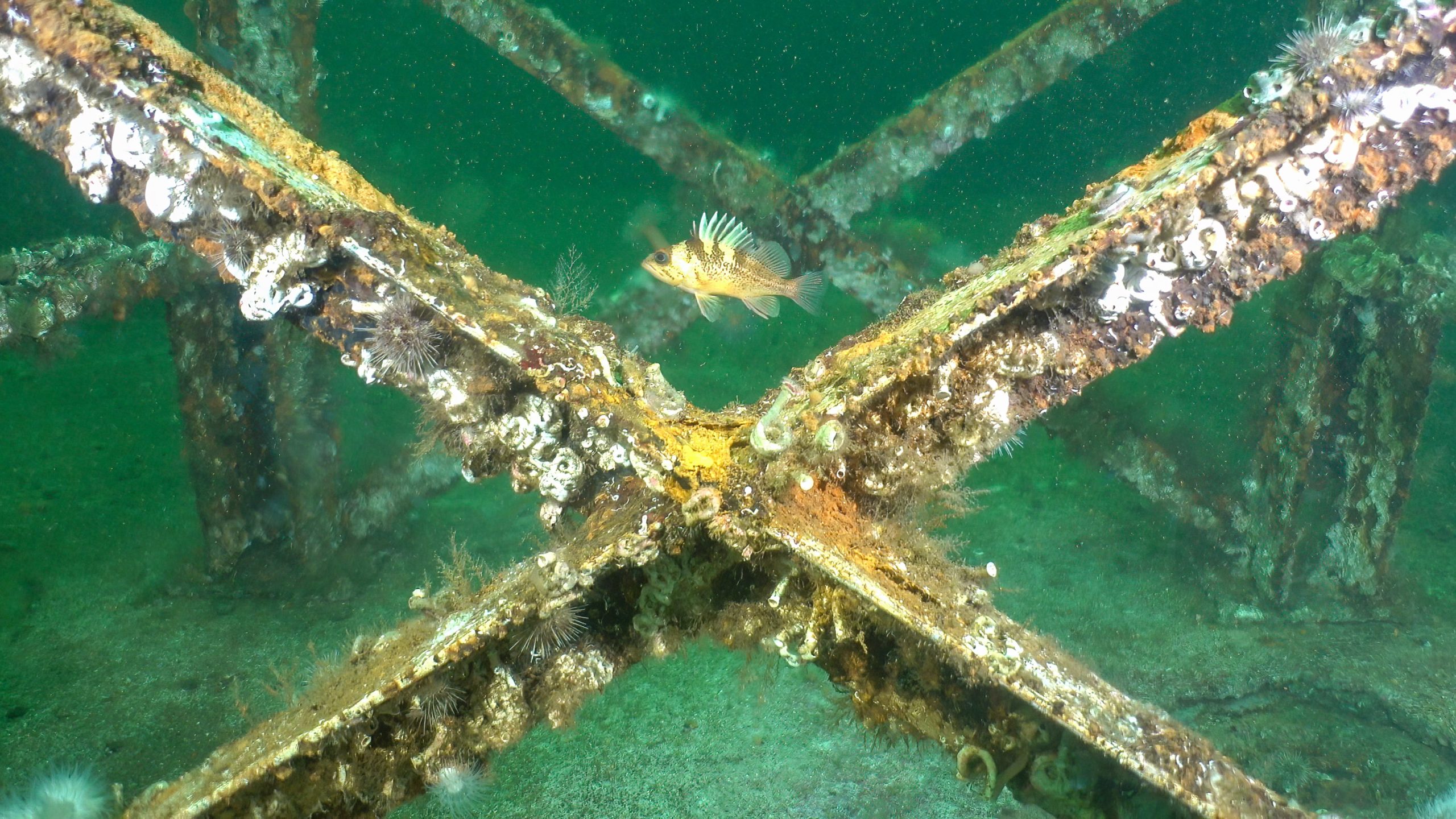The Magic of Artificial Reefs
By Lookout Production on Nov 23, 2022 with Comments 0

Algae, juvenile rockfish, urchins, and worms grab and take hold in this new habitat. Photo: Dirk De Keersmaecker, ARSBC Archive.
Howie Robins, President and Rick Wall, Vice President,
Artificial Reef Society of British Columbia
—
For end-of-life ships, a new life starts at the bottom of the ocean.
A group of marine environmentalists re-experienced the magic of reef-making with underwater visits to two ships in September. Underwater artificial reefs take marine vessels and convert them into living incubators for a plethora of marine life, from plants to sponges to fish.
A team from the Artificial Reef Society of British Columbia (ARSBC) and the producers of a new underwater TV documentary Water Worlds explored two artificial reefs: the Yogn, located near Powell River, and the former HMCS Columbia, near Campbell River.
Due to COVID restrictions, the ARSBC last visited their latest reefing projects in 2018. The teams discovered that the marine habitat multiplied over the last few years. Like other artificial reefs managed by ARSBC, the Yogn and Columbia show how end-of-life vessels have a second life in expanding marine habitats.
Rockfish and lingcod call Yogn home
The teams were amazed to see so many resident rockfish and lingcod on the Yogn after only a few years as a reef.
The USS YOGN-82 was an unpropelled gasoline barge built in 1943 by Concrete Ship Constructors in National City, California, and launched in 1944. Displacing 4,860 tons, it is 375 ft long, 56 ft wide and 38 ft deep. Each vessel had a crew of 12 and carried ten million litres of gasoline in 24 cargo tanks. It was reefed in June 2018 off Willingdon Beach in Powell River, B.C., and now rests on its keel fully upright in 100 ft of water.
The Yogn has been positioned as an artificial reef where water currents deliver and deposit embryonic organisms onto its complex structure.
The ship now has a coating of algae that has formed a diatom mat, the basic building block of the new reef habitat. The ship currently holds numerous species of plants and filter feeder species.
The Yogn demonstrates how artificial reefs not only expand marine habitats but also help reduce greenhouse gases. Certain marine species that photosynthesize on artificial reefs also aid in pulling in and capturing CO2 emissions from the atmosphere.
Columbia is an incubator for sponges and fish
Teeming with life, the Columbia is an incubator for juvenile marine life, from sponges to fish.
The former HMCS Columbia was a Restigouche-class Destroyer Escort built by the Burrard Drydock Company in North Vancouver. Commissioned on Nov. 7, 1959, it served on Canada’s East Coast until 1967, when it returned to Esquimalt as a stationary training ship.
The ship was decommissioned in 1974 and reefed in June 1996 off Maude Island, Campbell River, B.C., and rests on its keel in about 120 ft of water with a 36-degree list to port.
Filed Under: Top Stories
About the Author:





